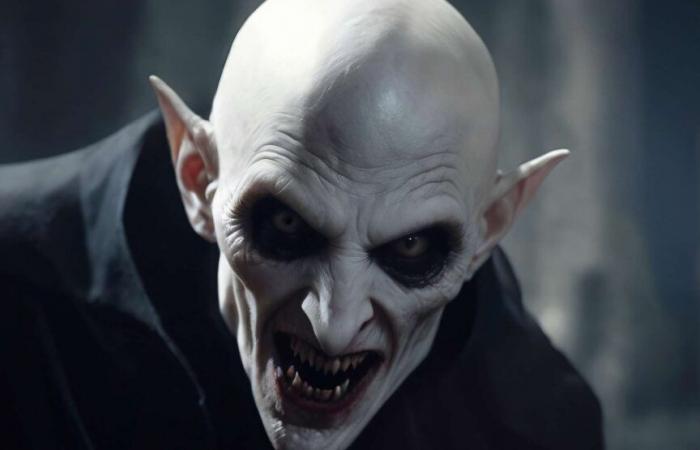In 1922, when the public discovered the monstrous and disturbing figure of Count Orlock – alias Nosferatu – in Murnau’s film, there is no doubt: the vampire is an evil creature in every way. Its long nailsnails hooked, its pointed ears, its large eyeseyes dark and his imposing silhouette which gives him the appearance of a specter… Impossible to feel anything other than fear at the sight of him.
Later, in 1931, Bela Lugosi offered the cinema a historical interpretation of Dracula in the eponymous film by Tod Browning. With his Hungarian accent and his seductive dandy appearance, he transforms the simple monster into a seasoned manipulator. The vampire count is still an antagonist, but he is charismatic, elegant and even receives letters from admirers who dream of being vampired.
Over the years, the vampires of popular culture have become less Manichean. In the 90s, Dracula by Francis Ford Coppola and Interview with a vampire by Neil Jordan present vampires who are victims of their nature, burdened by a curse that is gnawing at them. All in the guise of Brad Pitt or Gary Oldman, far from the frightening figure of Nosferatu. This evolution leads us to Edward Cullen, the ideal vampire son-in-law of the saga Twilight. However, the origin of the myth did not predict such a turnaround.
Brahmarakshasa, nukekubi et vampire
Far from Dracula’s Transylvanian mansion, variations of the familiar vampire populate the folklore of many countries. In Japan, the nukekubi are monsters with a human appearance that live integrated into society, but at night, their heads detach from their bodies and then fly freely in search of victims to bite. In India, in the Hindu religion, when a Brahmin – a spiritual master – commits mistakes, he is transformed into demondemon Brahmarakshasa after his death and is condemned to feed on blood and human flesh. Cursing is a trait common to other of these folkloric creatures, such as the Let’s eat Mesopotamians, ghosts of humans buried in bad conditions who would have the power to suck the life of the weakest, children in particular. But our Dracula-like vampire perhaps comes from a much more mundane curse.
The Son of the Dragon and the Vampire’s Disease
To write DraculaBram Stoker delves into Eastern European folklore and conducts almost academic research. He then borrows the name of his character from Vlad III the “Impaler”, a bloodthirsty military commander who lived in the Middle Ages on the territory of present-day Romania. His other nickname? Drăculea, “the son of the dragon”, inherited from his father, Vlad II known as “Dracul”, the dragon.
But, despite his pronounced taste for torture and summary executions, this is all that Stoker borrows from Vlad III to create the terrible count. Other classic characteristics of vampires, such as bloody diet or aversion to sunlight, are also inherited from the history of Eastern European nobility, but from medical history this time.
Indeed, the high circles of the time were often affected by porphyria, a hereditary blood disease which causes symptomssymptoms astonishing as a sensitivity to the sun and to the sulfur contained in theailail or gum recession that gave the teeth a fanged appearance. Doctors even recommended that patients drink blood to compensate for their deficit. red blood cellsred blood cells ! In short, everything is there. Surprisingly, porphyria was recognized as a disease in 1911, eight years before the publication of Dracula. Does medicine sometimes imitate fiction?






